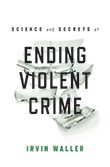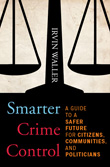Louisiana has made the headlines as the world´s prison capital. Indeed it uses mass incarceration for the most persons in proportion to its population in the world but it should also have made the headlines as the most murderous in the USA.
Yes its rate of incarceration (1138) is ten times Canada (117), seven times England and Wales (155) and four times Minnesota (300). This is not an accident. It makes it an ¨incarcerogenic¨ State.
But it also looks bad or maybe worse when we compare its murder rate (11.2), which is 7 times Canada (1.8), 10 times England and Wales (UK 1.2), and 7 times Minnesota (1.8). This makes it a murderous State.
In 1996, the US National Criminal Justice Commission developed a report card to compare the rates of violence for US States on three indicators. These focused on use of incarceration, poverty and comparison of teacher and prison guard´s pay. Overall, Louisiana was at the bottom of the pile.
The Commission made eleven practical recommendations. Among these, it called on States to develop crime prevention councils to focus on anti-crime strategies, use innovative public health strategies to reduce violence, and invest in children and youth to reduce street violence.
But two things have advanced significantly since 1996:
- The strength of our knowledge about what investments prevent violence.
Numerous prestigious sources such as the US Department of Justice, the Centre for Disease Control and the World Health Organization confirm that we know multiple strategies that have strong evidence for their effectiveness in stopping violence (see ¨Where is the evidence that prevention reduces crime¨ in blog 2011/12/17).
Law enforcement has confirmed this knowledge in numerous ways. Super-cops in the USA, UK and Canada are endorsing the same message… we cannot arrest our way out of street violence. Fight Crime: Invest in Kids is an anti-crime organization of over 5,000 police chiefs, sheriffs, prosecutors, and violence survivors. It echoes the prestigious sources by calling for serious investment in effective early child hood programs. Its message stresses that States could save millions on future prisoners by such investing.
2. Our understanding of how to bring about the changes.
Academic criminologists had assumed that the trial and error science that had led to the strong knowledge reaffirmed by those prestigious organizations would lead to massive innovation. Nothing could be further from the truth. While prevention science developed, the US became the number one jailor.
Even now in the UK, a distinguished British Think Tank has shifted from correctly investing in what will reduce crime and lower costs to encouraging the insufficient and ineffective strategy of trial and error.
Innovation to cut violent rates of crime and costs of incarceration requires investment – not just experiments. In chapters 8 and 9 of Less Law, More Order, I show how it was the provision of federal funds to the States to encourage prison construction and hiring of more police that made the US number 1 for mass incarceration. It will be the provision of federal funds or State political leadership that will make the US number 1 for violence prevention.
Unfortunately, what has not changed has been the lack of interest from politicians in preventing innocent persons from becoming victims of violence rather than promoting the incarceration of young men. According to some important media, Sheriff´s and politicians are paid to incarcerate. Maybe they should be paid to invest in what prevents violence.

